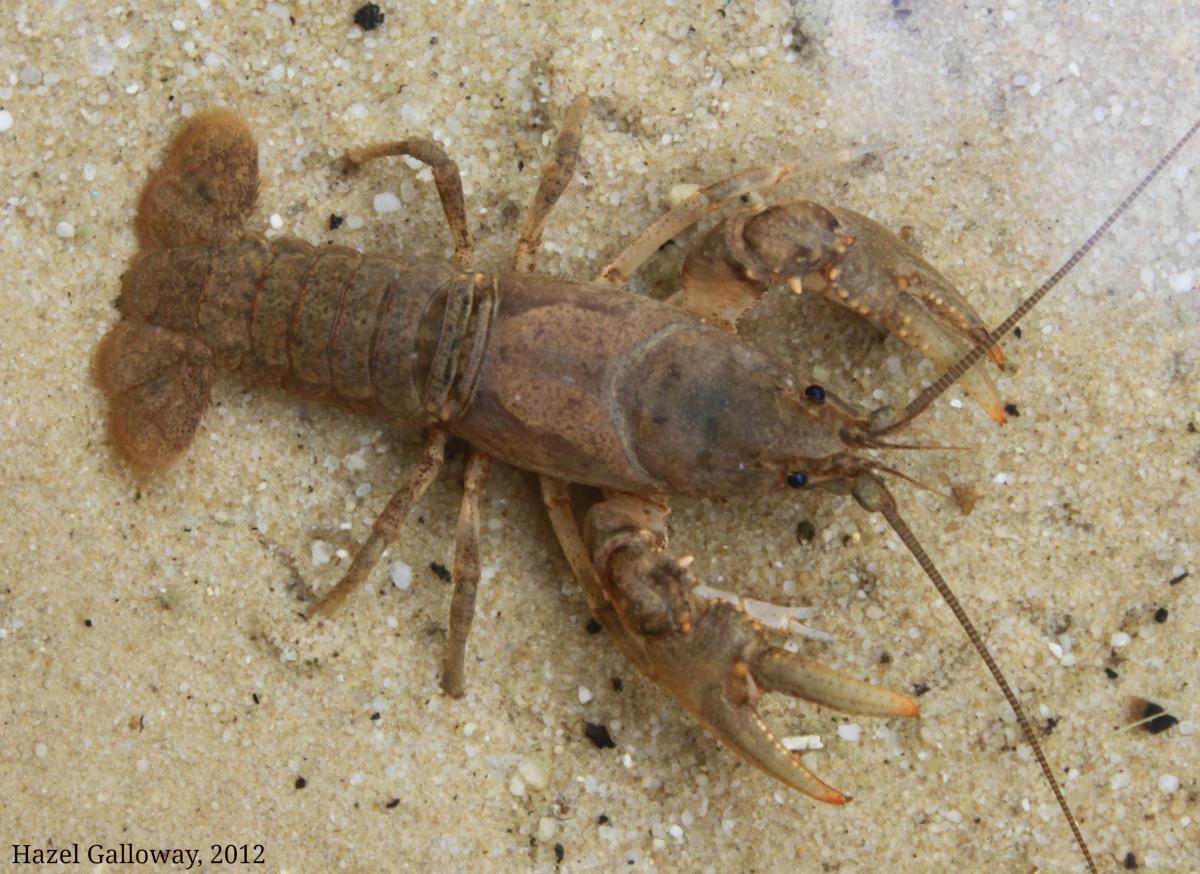Crayfish are one of the most common freshwater crustaceans in North America. Although this area is home to more than 30 different species, the Appalachian Brook Crayfish is one of the most widespread. Due to the great amount of intraspecific variation across its range, however, it is thought that Cambarus bartonii may actually represent a complex of several different species.
Cambarus bartonii is not particularly distinctive and can be difficult to identify. It is a small- to medium-sized crayfish, with a generally smooth body and smooth claws which curve slightly inwards. One of the characteristic features which separates it from other similar species is the possession of a smaller-than-average rostrum (the triangle-shaped part of the shell between the eyes). These crayfish are typically orange-brown in color, although blue morphs have been found of this species.
The Appalachian Brook Crayfish typically makes its home in the clear, cool water of rivers, lakes, and streams. It prefers more oxygenated water, and as such is often found in somewhat turbulent areas. These crayfish construct burrows under rocks and in the sediment on the bottom of the body of water. These burrows, which are painstakingly excavated by removing small rocks one at a time with the claws, can be surprisingly deep and complex. Burrows have been found to be as deep as 1 m, and may pass through several layers of rock and gravel; they also have long lateral passageways. In the process of digging these burrows, crayfish often create distinctive “chimneys,” which are the openings of their burrows built up all around with the excavated sediment. These often protrude out of the water or are found on the banks of streams and ponds, and resemble their namesake.
These crayfish mate in spring and early summer. After mating, the female will carry the fertilized eggs attached to her pleopods (the small “legs” on the underside of the tail that are used for swimming). While she is carrying her eggs, the females are referred to as being “in berry,” due to the resemblance of the cluster of eggs on her underside to a berry. After the eggs hatch, the young crayfish remain attached to her underside until shortly after their second molt. After separating from their mother and siblings, they young (typically around 5 mm in length) assume a lifestyle similar to their parents’. Namely, they eat anything they can find. Crayfish are predators on small insects, other invertebrates, and small vertebrates such as tadpoles; herbivores on algae and other water plants; and scavengers on recently dead animals.
 Crayfish are possessed of an extraordinary sense of smell. It is estimated that 40% of their brain is devoted to the sense of smell, as opposed to less than 1% of a human’s. By flicking their antennules (the small, paired sets of miniature antennae between the larger pair) constantly, they are able to detect both chemical cues and motion in their environment that could indicate food, a mate, or a predator. They also have chemical receptors located on their legs, the better to detect their surroundings.
Crayfish are possessed of an extraordinary sense of smell. It is estimated that 40% of their brain is devoted to the sense of smell, as opposed to less than 1% of a human’s. By flicking their antennules (the small, paired sets of miniature antennae between the larger pair) constantly, they are able to detect both chemical cues and motion in their environment that could indicate food, a mate, or a predator. They also have chemical receptors located on their legs, the better to detect their surroundings.
Cambarus bartonii is vulnerable to many predators, humans not the least. This species and its relatives are collected for human consumption, a harvest that can be almost 1,000 tons worldwide. However, many of these crayfish are farmed, and those in our area are not under significant threat from humans. Their natural predators include raccoons, opossums, foxes, birds of prey, and many species of fish. Despite the many dangers, crayfish can live to be four years old in the wild.
This specimen was found in the Station Pond and is a male, judging by its reproductive organs. This species is somewhat sexually dimorphic, with males possessing slightly larger claws.
Hazel Galloway
Sources:



